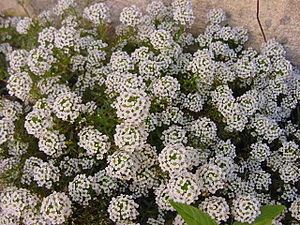[amazon_link asins=’B005KLLSZU,B01BO1RZ2O,B017AC6M20,7544731499,7566007424,7801907108′ template=’ProductCarousel’ store=’finmeacur-20′ marketplace=’US’ link_id=’dbef0ce6-0abe-11e7-b0cb-4f508196fe50′][amazon_link asins=’B01LZMC43J,B017ABWBJE’ template=’ProductCarousel’ store=’finmeacur-20′ marketplace=’US’ link_id=’bcb287ad-0abe-11e7-92b6-4d7797077691′]
Botanical Name : Aristolochia contorta
Family: Aristolochiaceae
Subfamily: Aristolochioideae
Genus: Aristolochia
Species : Aristolochia contorta
Order: Piperales
Synonyms : A. nipponica.
Common Name: Ma Dou Ling
Habitat : E. Asia – China, Japan, Korea, Manchuria. .-Aug. Grows in edges of mountain woods.
Description:
Aristolochia contorta is a perennial herb, growing to 1.5 m (5ft). It is in flower from May to July, and the seeds ripen from Sep to October. The flowers are hermaphrodite (have both male and female organs) and are pollinated by Flies.
The shrub has stout elongated rhizomes. Stem slender, glabrous. Leaves alternate, cordate or broadly ovate-cordate, 4-10 cm long, 3.5-8 cm wide, acute or obtuse at tip, cordate at base, entire, petioles 1-7 cm long.(CLICK & SEE) Peduncles axillary, 1-4 cm long, with prominent bracts at base. Flowers few in axils, fascicled, the pedicels 1-4 cm long; the calyx tubular, inflated and globose at base, loosely pilose inside; the limb dilated, obliquely truncate, narrowly deltoid, long-acuminate to a filiform point; stamens 6, ovary inferior. Fruit a capsule,globose, 3 cm in diameter, 6 valved. Jul.-Aug……...CLICK & SEE
The plant prefers light (sandy), medium (loamy) and heavy (clay) soils and requires well-drained soil.The plant prefers acid, neutral and basic (alkaline) soils..It can grow in semi-shade (light woodland) or no shade.It requires moist soil.
Cultivation:
We have very little information on this species and do not know if it will be hardy in Britain, though judging by its native range it should succeed outdoors in many parts of this country. The following notes are based on the general needs of the genus. Prefers a well-drained loamy soil, rich in organic matter, in sun or semi-shade. Succeeds in ordinary garden soil. Most species in this genus have malodorous flowers that are pollinated by flies.
Propagation
Seed – best sown in a greenhouse as soon as it is ripe in the autumn. Pre-soak stored seed for 48 hours in hand-hot water and surface sow in a greenhouse. Germination usually takes place within 1 – 3 months at 20°c. Stored seed germinates better if it is given 3 months cold stratification at 5°c. When large enough to handle, prick the seedlings out into individual pots and grow them on in the greenhouse for their first winter. Plant out in late spring or early summer after the last expected frosts. Division in autumn. Root cuttings in winter.
Edible Uses :
Edible Parts: Leaves.
Medicinal Uses;
Antiasthmatic; Antiseptic; Antitussive; Cancer; Expectorant; Sedative.
The fruit and its capsule are antiasthmatic, antiseptic, antitussive and expectorant. A decoction of the fruit is used in the treatment of cancer, coughs, inflammation of the respiratory organs, haemorrhoids and hypertension. It is also used to resolve phlegm and lower blood pressure. It has an antibacterial action, effective against Staphylococcus aureus, Pneumococci, bacillus dysentericae etc. The root contains aristolochic acid. This has anti-cancer properties and can be used in conjunction with chemotherapy and radiotherapy. Aristolochic acid can also be used in the treatment of acute and serious infections such as TB, hepatitis, liver cirrhosis and infantile pneumonia. It also increases the cellular immunity and phagocytosis function of the phagocytic cells. Aristolochic acid is said to be too toxic for clinical use. The root is used as a purgative in the treatment of rabies and also has sedative properties.
A decoction of the fruit is used in the treatment of cancer, coughs, inflammation of the respiratory organs, hemorrhoids and hypertension. It is also used to resolve phlegm and lower blood pressure. It has an antibacterial action, effective against Staphylococcus aureus, Pneumococci, bacillus dysentericae etc. The root contains aristolochic acid. This has anti-cancer properties and can be used in conjunction with chemotherapy and radiotherapy. Aristolochic acid can also be used in the treatment of acute and serious infections such as TB, hepatitis, liver cirrhosis and infantile pneumonia. It also increases the cellular immunity and phagocytosis function of the phagocytic cells. Aristolochic acid is said to be too toxic for clinical use. The root is used as a purgative in the treatment of rabies and also has sedative properties.
Known Hazards: No specific details for this species is found but most members of this genus have poisonous roots and stems. The plant contains aristolochic acid, this has received rather mixed reports on its toxicity. According to one report aristolochic acid stimulates white blood cell activity and speeds the healing of wounds, but is also carcinogenic and damaging to the kidneys. Another report says that it is an active antitumour agent but is too toxic for clinical use. Another report says that aristolochic acid has anti-cancer properties and can be used in conjunction with chemotherapy and radiotherapy and that it also increases the cellular immunity and phagocytosis function of the phagocytic cells.
Disclaimer:
The information presented herein is intended for educational purposes only. Individual results may vary, and before using any supplements, it is always advisable to consult with your own health care provider.
Resources:
http://www.pfaf.org/user/Plant.aspx?LatinName=Aristolochia+contorta
http://species.wikimedia.org/wiki/Aristolochia_contorta
http://www.herbnet.com/Herb%20Uses_LMN.htm
Related articles
- Aristolochia grandiflora (findmeacure.com)
- Plumbago europaea (findmeacure.com)
- White Lettuce (findmeacure.com)
- Klip Dagga (findmeacure.com)
- Medicine: Man of the Soil (time.com)
- E anche quando non ci sei… (manna93.wordpress.com)
- Emilia sonchifolia (findmeacure.com)
- Aralia chinensis (findmeacure.com)
- Saccharina japonica (findmeacure.com)



































